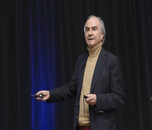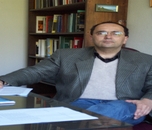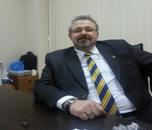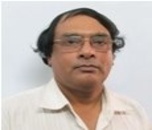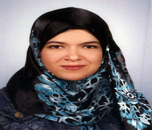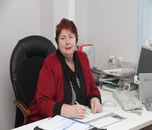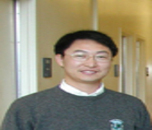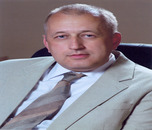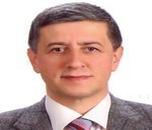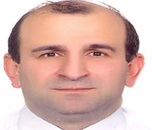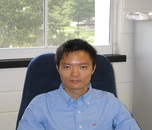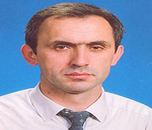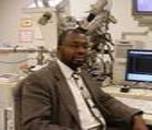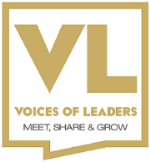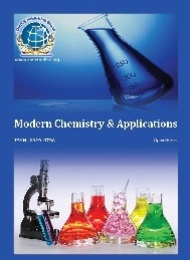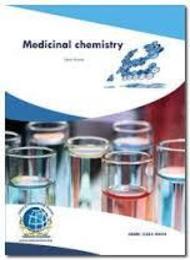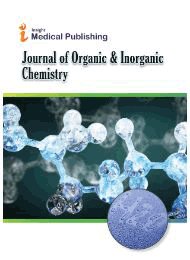Theme: Exploring the Research Challenges and Advancements in Applied Chemistry
Applied Chemistry 2016
Track 1: Fundamentals & principles of applied chemistry
Applied Chemistry means application of theories and principles of Chemistry to practical purposes.
Major of Applied Chemistry consists of laboratories of applied chemistry, environmental chemical engineering, and material sciences, in which students can study and research vigorously in extensive fields such as life, environment, energy and material development and also learn their IUPAC. For human survival, it is required to have advanced material transformation technology that enriches human life and propulsion of biotechnology necessary for life/medicine/field of food, development of materials for environmental harmony, resources-saving and energy-saving technology, and also environmental system to live together with natural ecological system etc., In science, we usually talk about two types of research: pure and applied. Pure research focuses on answering basic questions such as, "how do gases behave?" Applied Chemistry tools would be involved in the process of developing a specific preparation for a gas in order for it to be produced and delivered efficiently and economically. This division sounds like it would be easy to make, but sometimes we cannot draw a clear line between what is “pure” and what is “applied chemistry.”
Related Conferences
International Conference on Applied Chemistry October 17-18, 2016 Houston, USA; International Conference on Nuclear Chemistry October 17-19, 2016 Rome, Italy; International Conference on Pharmaceutical Chemistry August 04-06, 2016 Frankfurt, Germany; World Chemistry Conference August 4-6, 2016 Toronto, Canada; International Conference and Exhibition on Materials Chemistry March 31-April 01, 2016 Valencia, Spain; Pittsburgh Conference on Analytical Chemistry and Applied Spectroscopy Pittcon, 06 -11 March,2016 Atlanta, GA, United States; Pittsburgh Conference on Analytical Chemistry and Applied Spectroscopy Pittcon, 02-10 March 2017, Chicago, IL, United States; 14th International Conference on the Chemistry of Antibiotics and other Bioactive Compounds, 13-16 October 2015, Galveston, United States; The Expanding Toolbox of Medicinal Chemistry: From Chemical Biology to Clinical Applications,16 October 2015, Dijon, France; 6th RSC,SCI symposium on GPCRs in Medicinal Chemistry, 13-15 June 2016, Verona, Italy. International union of Pure and Applied Chemistry; American Chemical Society; Royal Society of Chemistry.
Applied biochemistry called biological chemistry, is the study of chemical process within living organisms. Animal Biochemistry is the study of different chemical reactions going on in the body of animal for life. Plant biochemistry is not only an important field of basic science explaining the molecular function of a plant, but is also an applied science that is in the position to contribute to the solution of agricultural and pharmaceutical problems. . Plant biochemistry consists of the chemical elements of which plants are constructed—principally carbon, oxygen, hydrogen, nitrogen, phosphorus, sulfur, etc. Molecular biology concerns the molecular basis of biological activity between the various systems of a cell, including the interactions between the different types of DNA, RNA and proteins and their biosynthesis, and studies how these interactions are regulated. Genetics is the study of genes, heredity, and genetic variation in living organisms. It is generally considered a field of biology, many of the life sciences. Molecular Enzymology deals with enzymes, enzymes are macromolecular biological catalysts. Enzymes accelerate, or catalyze, chemical reactions. Metabolism is the set of life sustaining chemical transformations within the cells of living organisms. Immunology is a branch of biomedical science that covers the study of all aspects of the immune system in all organisms. It deals with the physiological functioning of the immune system in states of both health and diseases malfunctions of the immune system in immunological disorders.
Related Conferences
1st International Conference on Applied Biochemistry, 14-17 March, 2016, Luxor, Egypt; International Conference on Biochemistry October 10-12, 2016 Kuala Lumpur, Malaysia; 1st International Conference on Applied Biochemistry,18–19 November 2015, Jeddah, Saudi Arabia; International Conference on Applied Chemistry October 17-18, 2016 Houston, USA; The 23rd Conference on Isoprenoids, 04-07 September 2016, Minsk, Belarus, Europe; International Conference on Pharmaceutical Chemistry August 04-06, 2016 Frankfurt, Germany; World Chemistry Conference August 4-6, 2016 Toronto, Canada; European Chemistry Congress June 16-18, 2016 Rome, Italy; International Conference on Nuclear Chemistry October 17-19, 2016 Rome, Italy; 42nd International Conference on Coordination Chemistry, 03 - 08 July 2016, France, Europe; 6th International Conference on Metals in Genetics, Chemical Biology and Therapeutics, 17 - 20 February 2016, Bangalore, India. American Society For Biochemistry and Molecular Biology; Biochemical Society; Panamerican Association for Biochemistry and Molecular Biology
Track 3: Applied physical chemistry
Physical Chemistry is the application of physical principles and measurements to understand the properties & characteristics of matter, as well as for the development of new technologies for the environment, energy and medicine. Acid bases include acid base reactions, aqueous solutions, buffers, ionization constants, polyprotic acids and bases. Nuclear chemistry includes applications of nuclear chemistry, applied nuclear chemistry, components of the nucleus, fission and fusion, nuclear reactions, nuclear chain reactions, thermodynamic stability of the atomic nucleus. Quantum mechanics deals with waves and particles, fundamentals of quantum mechanics, postulates of quantum mechanics, angular momentum, molecular spectroscopy, quantum states of atoms and molecules. Spectroscopy give different kinds of information as a result of interaction of atoms with light and deals with Vibrational spectroscopy, Electronic spectroscopy, Infrared spectroscopy, Raman spectroscopy, Rotational spectroscopy, photoelectron spectroscopy. Surface science is the study of physical and chemical phenomena that occur at the interface of two phases, including solid–liquid interfaces, solid–gas interfaces, solid–vacuum interfaces, and liquid–gas interfaces.
Related Conferences
International Conference and Exhibition on Materials Chemistry March 31-April 01, 2016 Valencia, Spain; International Conference on Industrial Chemistry June 27-28, 2016 New Orleans, USA; International Conference on Organic Chemistry August 10-11, 2016 Las Vegas, USA; International Conference on Stereochemistry August 18-19, 2016 Sao Paulo, Brazil; International Conference and Exhibition on Cheminformatics and System Chemistry July 14-15, 2016 Brisbane, Australia; New Zealand Institute of Chemistry Conference, 21 - 24 August 2016, Queenstown, New Zealand; Pacifichem 2015, 15 - 20 December 2015, Honolulu, USA; 15th International Congress of Quantum Chemistry, 08 - 13 June 2015, Beijing, China; European Winter Conference on Plasma Spectrochemistry, 22 - 26 February 2015, Münster, Germany; A Voyage from Molecules to Materials with Numerical Methods for Quantum Chemistry, 11 - 15 January 2015, Norway, Europe; American Physical Society; Canadian Society for Chemistry; Chemical Society of Japan.
Track 4: Applied surface chemistry
Applied Surface Chemistry forms combined with Polymer Technology, Biopolymer Technology and Pharmaceutical Technology. Nanomaterials can be used as templates to create inorganic materials – metals, metal oxides, nanoparticles, nanowires have been prepared by this route. Examples of applications include catalysts for emission control, electrode materials for fuel cells, and porous media in which enzymes and metal-organic homogeneous catalysts can be inserted. Bionanomaterials, i.e., nanomaterials with applications withing biotechnology and biomedicine, Dental implants are one useful application. NMR diffusometry is the most important measuring technique studies about structure and structure dynamics of supramolecular chemical materials such as gels, Nanoemulsions and the cellulose fiber. Surfactants are amphiphiles that break down readily in the environment. New type of surfactants is amino-acid based surfactant. Organic and bioorganic synthesis is performed in nanostructured media, such as microemulsions and suspensions of mesoporous materials, and organic gels.
Related Conferences
International Conference on Nuclear Chemistry October 20-22, 2016 Rome, Italy; International Conference on Histochemistry and Cytochemistry September 14-15, 2016 Phoenix, USA; 2nd World Chemistry Conference August 08-10, 2016 Toronto, Canada; European Chemistry Congress June 16-18, 2016 Rome, Italy; International Conference on Pharmaceutical Chemistry September 08-10, 2016 Frankfurt, Germany; 7th International Conference on Advanced Nanomaterials, 25 - 27 Jul 2016, Portugal, Europe; 8th International Conference on Advanced Materials and Nanotechnology, 12 - 16 Feb 2017, Queenstown, New Zealand; International Conference on the Coordination and Organometallic Chemistry of Germanium, Tin and Lead, 28 - 02 Aug 2016, Czech Republic, Europe; Bioactive Natural Products: Translating Promise into Practice, 11 - 13 Jul 2016, Oxford, United Kingdom; Macromolecular Colloquium Freiburg, 24 - 26 Feb 2016, Freiburg, Germany; Chemical Industries Association; EuCheMS (European Association for Chemical and Molecular Sciences); Federation of African Societies of Chemistry (FASC).
Track 5: Applied Inorganic chemistry
Inorganic chemistry deals with the synthesis of inorganic and organometallic compounds. This field covers all chemical compounds except the myriad organic compounds. Descriptive inorganic chemistry focuses on the classification of compounds based on their properties and characterstics. Theoretical inorganic chemistry begins with the Bohr model of the atom and, using the tools and models of theoretical chemistry and computational chemistry including molecular orbital theory ligand field theory and density functional theory. Mechanistic inorganic chemistry explains about the mechanisms of reactions which are discussed differently for different classes of compounds which include redox reactions, reactions at ligand, transition metal compounds. Characterization of inorganic compounds includes determination of solubility, melting point and acidity. Commonly employed techniques in characterization are X-ray crystallography, dual polarization interferometer, and various forms of spectroscopy. Inorganic synthetic methods can be classified roughly according to the volatility or solubility of the component reactants. Soluble inorganic compounds are prepared using methods of organic synthesis.
Related Conferences
International Conference on Clinical Chemistry and Laboratory Medicine May 02-03, 2016 Chicago, USA; International Conference and Exhibition on Cheminformatics and System Chemistry July 14-15, 2016 Brisbane, Australia; International Conference on Nuclear Chemistry October 17-19, 2016 Rome, Italy; International Conference on Pharmaceutical Chemistry August 04-06, 2016 Frankfurt, Germany; World Chemistry Conference August 4-6, 2016 Toronto, Canada; BMCS Mastering MedChem II: 2nd RSC-BMCS symposium on mastering medicinal chemistry March 9, 2016, Huddersfield, United Kingdom; Polymers in Photovoltaics February 2–3, 2016; Drug Development, Pharmacokinetics and Imaging January 18–22 2016; Sustainable and Green Chemistry Conference 4–6 April 2016 Berlin, Germany; 15th Workshop on Progress in Trace Metal Speciation for Environmental Analytical Chemistry September 04-07, 2016, Gdansk, Poland; Federation of Asian Chemical Societies; The Royal Flemish Chemical Society (KVCV); Societe Chimique de France.
Heterogeneous catalysts act in a different phase than the reactants. Most heterogeneous catalysts are solids that act on substrate in a liquid or gaseous reaction mixture. Homogeneous catalysts function in the same phase as the reactants, typically homogeneous catalysts are dissolved in a solvent with the substrates. In acid catalysis and base catalysis a chemical reaction is catalyzed by an acid or a base. The acid is the proton donor and the base is the proton acceptor. Typical reactions catalyzed by electron transfer are esterification and aldol reactions. Enzyme catalysis is the increase in the speed of a chemical reaction by the active site of a protein.
Related Conferences
International Conference and Exhibition on Materials Chemistry March 31-April 01, 2016 Valencia, Spain; International Conference on Industrial Chemistry June 27-28, 2016 New Orleans, USA; International Conference on Organic Chemistry August 10-11, 2016 Las Vegas, USA; International Conference on Stereochemistry August 18-19, 2016 Sao Paulo, Brazil; International Conference on Clinical Chemistry and Laboratory Medicine October 17-18, 2016 Chicago, USA; 17th Tetrahedron Symposium, 28 June-01 July 2016, Barcelona, Spain; National Medicinal Chemistry Symposium, 26-29 June 2016, Chicago (IL), USA; 7th International Symposium on Molecular Aspects of Catalysis by Sulfides, 22-26 May 2016, Utrecht, Netherlands; Carbon Dioxide Catalysis, 19-22 April 2016, Carvoeiro, Portugal; Faraday Discussion 2016: Designing new heterogeneous catalysis, 04-06 April 2016, London, United Kingdom; International Society of Heterocyclic Chemistry; International Society for the Philosophy of Chemistry; International Union of Crystallography.
Track 7: Applied Polymer chemistry
Polymer chemistry is a multidisciplinary science that deals with the synthesis and chemical properties of polymers which were considered as macromolecules. Polymers are high molecular mass compounds formed by polymerization of monomers. Schematically polymers are subdivided into biopolymers, synthetic polymers and thermoplastic polymers. Bipolymers produced by living organisms, Thermoplastic polymers such as polyethylene, teflon, polystyrene, polypropylene, polyester, polyurethane, Poly(methyl methacrylate), vinyl chloride, nylon, rayon, cellulose, silicon, glass fiber. There are different types of polymerization namely Living polymerization, Block and functional polymers, Group transfer polymerization, Living radical polymerization.
Related Conferences
International Conference and Exhibition on Polymer Chemistry, November 14-16, 2016 Atlanta, USA; 4th World Congress on Petrochemistry and Chemical Engineering, December 5-6, 2016 Seattle, USA; International Conference and Exhibition on Marine Drugs and Natural Products, July 28-30, 2016 Melbourne, Australia; 7th International Conference and Exhibition on Analytical & Bioanalytical Techniques, September 29-October 01, 2016 Miami, USA; 2nd International Conference on Genetic and Protein Engineering, November 14-16, 2016 Atlanta, USA; 80th Prague Meeting on Macromolecules-Self-Organization in the World of Polymers, July 10-14, 2016 Prague, Czech Republic; International Workshop on Polymer Reaction Engineering, May 17-20, 2016 Hamburg, Germany; 10th International Conference on Energy Sustainability, June 26-30, 2016 North Carolina, USA; Polymers in Africa 2015, December 9-10, 2016 London, United Kingdom; Polymers in Photovoltaics 2016, February 2-3, 2016 Dusseldorf, Germany; Israel Analytical Chemistry Society; Israel Chemical Society; Italian Chemical Society.
Track 8:Applied Medicinal Chemistry
Medicinal chemistry is the intersection of chemistry, especially synthetic organic chemistry, and pharmacology, where they are involved with design, chemical synthesis and development for market of pharmaceutical agents, or bio-active molecules. Medicinal chemistry focus on small organic molecules, encompasses synthetic organic chemistry and aspects of natural products and computational chemistry are close combination with chemical biology, enzymology and structural biology together aiming at the discovery and development of new therapeutic agents. It involves chemical aspects of identification, and synthetic alteration of new chemical entities to make them suitable for therapeutic use, understanding their structure-activity relationships. Drug discovery is the identification of novel active chemical compounds. It also studies about the drug metabolism.
Related Conferences
International Conference on Medicinal Chemistry and Computer Aided Drug Designing Conference November 02-04, 2015 Atlanta, USA; International Conference on Materials Chemistry, March 31-Apr 1, 2016 Valencia, Spain; International Conference on Clinical Chemistry and Laboratory Medicine May 2-3, 2016 Chicago, USA; International European Chemistry Congress, June 16-18, 2016 Rome, Italy; International Conference on Cheminformatics and System Chemistry, July 14-15, 2016 Brisbane, Australia; 23rd Conference on Isoprenoids, September 04–07, 2016, Minsk (BY). National Medicinal Chemistry Symposium, 26-29 June 2016, Chicago (US); Structure Based Drug Design Conference 2016, 21-24 February 2016, Carlsbad (US); 6th International Conference on Chemical Biology, Metals in Genetics and Therapeutics (ICMG 2016), 17-20 February 2016, Bangalore (IN); 2nd Neurodegeneration Conference, 02-05 December 2015, Cancun (MX); International Symposium on Advances in Synthetic Medicinal Chemistry, 15-17 November 2015, Tel Aviv (IL); Chemistry Conferences Europe June 16-18, 2016 Rome, Italy; Russian Chemometric Society; Serbian Chemical Society; Sociedade Brasileira de Quimica.
Track 9: Organometallic chemistry
Organometallic chemistry is the study of chemical compounds containing at least one bond between a carbon atom of an organic compound and a metal. Organometallic chemistry combines aspects of inorganic chemistry also known as bioinorganic chemistry and organic chemistry. Organometallic compounds are widely used in homogeneous catalysis. Organometallic compounds are distinguished by the prefix "organo-" e.g. organopalladium compounds and Organometallic catalysis. Examples of such organometallic compounds include all Gilman reagents, which contain lithium and copper. Tetracarbonyl nickel, and ferrocene are examples of organometallic compounds containing transition metals which are related to f-block chemistry. The term "metalorganics" usually refers to metal-containing compounds lacking direct metal-carbon bonds but which contain organic ligands. Metal beta-diketonates, alkoxides, and dialkylamides are representative members of this class. In addition to the traditional metals, undergo organic transformation eg; lanthanides, actinides, and semimetals, trace elements such as boron, silicon, arsenic, and selenium are considered to form organometallic compounds, e.g. organoborane compounds such as triethylborane. Few organometalics Period 2 elements: organolithium chemistry, organoberyllium chemistry, organoborane chemistry, Period 3 elements: organomagnesium chemistry, organoaluminum chemistry, organosilicon chemistry.
Related Conferences
International Symposium on Molecular Aspects of Organometallic Catalysis by Sulfides, 22 - 26 May 2016, Utrecht New Zealand; Single Entity Electrochemistry, 31 August - 2 September 2016, York, UK; International Conference on Chemistry and Chemical Process, 1-3 February, Rome, Italy; Conference on Isoprenoids, 4-6 september 2016, Belarus, Europe; International Conference on Clinical Chemistry and Laboratory Medicine May 02-03, 2016 Chicago, USA; Structure Based Drug Design Conference, 21-24 2016, February spain; Conference on Chemical Sciences and Technologies, 27-31October 2015 -1 November 2015, Bosnia and Herzegovina, Europe; XXXV Nordic Congress in Clinical Chemistry. 14-16 June, Denmark; National Medicinal biochemistry Symposium, 26-29 June 2016, Chicago USA; Challenges in Organic Chemistry, 20 - 23 March 2016, Irvine, United States; Chemistry Conferences Europe June 16-18, 2016 Rome, Italy; Southen Nevada Local Section of the American Chemical Society; American Chemistry Council; American Organization of Analytical Chemists (AOAC) International.
Track 10: Thermodynamics of applied chemistry
Energy exists in several forms, like heat, light, energy, and voltage. Energy is that the ability to bring forth modification or to try and do work. Physics is that the study of energy. First Law of Thermodynamics. Energy will be modified from one kind to a different; however it can't be created or destroyed. The whole quantity of energy and matter within the Universe remains constant, simply ever-changing from one kind to a different. The primary Law of physical model states that energy is usually preserved, it can't be created or destroyed. In essence, energy will be regenerate from one kind into another. The Second Law of physics states that "in all energy exchanges, if no energy enters or leaves the system, the P.E. of the state can forever be but that of the initial state this can be conjointly ordinarily observed as entropy. Within the method of energy transfer, some energy can dissipate as heat transfer. Entropy may be a live of disorder cells aren't disordered so have low entropy. The flow of energy maintains order and life. Entropy wins once organisms stop to require in internal energy and die. H is that the quantity of warmth content used or free in an exceedingly system at constant pressure. H is typically expressed because the modification in heat.
Related Conferences
International Conference on Applied Chemistry October 17-18, 2016, Houston, USA; International Conference on Nuclear Chemistry October 17-19, 2016 Rome, Italy; International Conference on Pharmaceutical Chemistry August 04-06, 2016 Frankfurt, Germany; World Chemistry Conference August 4-6, 2016 Toronto, Canada; International Conference and Exhibition on Materials Chemistry, March 31-April 01, 2016 Valencia, Spain; Pittsburgh Conference on Analytical Chemistry and Applied Spectroscopy Pittcon, 06-11 March,2016 Atlanta, GA, United States; Pittsburgh Conference on Analytical Chemistry and Applied Spectroscopy Pittcon, 02-10 March 2017, Chicago, IL, United States; 14th International Conference on the Chemistry of Antibiotics and other Bioactive Compounds, 13-16 October 2015, Galveston, United States; The Expanding Toolbox of Medicinal Chemistry: From Chemical Biology to Clinical Applications, 16 October 2015, Dijon, France; 6th RSC, SCI symposium on GPCRs in Medicinal Chemistry, 13-15 June 2016, Verona, Italy; Chemistry Conferences Europe June 16-18, 2016 Rome, Italy; Canadian Society for Chemical Technology (CSCT); Chinese-American Chemical Society; Council for Chemical Research (CCR)
Track 11: Isolation techniques
Extraction in chemistry may be a separation technique consisting within the separation of a substance from a matrix. It includes Liquid-liquid extraction, and Solid part extraction. Crystallization is additionally a chemical solid–liquid separation technique, within which heat transfer of a substance from the liquid resolution to a pure solid crystalline part happens. In chemical engineering crystallization happens in an exceedingly crystallizer. Sublimation is that the transition of a substance directly from the solid to the gas part while not passing through the intermediate liquid part. Sublimation is associate degree heat-absorbing natural process that happens at thermal and pressures below a substance's triple purpose in its part diagram. Distillation may be a method of separating the part substances from a liquid mixture by selective evaporation and condensation. Distillation might end in basically complete separation or it should be a partial separation that will increase the concentration of trace elements of the mixture.
Related Conferences
International Conference and Expo on Industrial Microbiology August 01-03, 2016 Frankfurt, Germany; 2nd International Conference on Current Trends in Mass Spectrometry May 09-11, 2016 Chicago, USA; Asia Pacific Mass Spectrometry Congress October 10-12, 2016 Kuala Lumpur, Malaysia; International Pharmaceutical Method Development and Validation Conference October 20-22, 2016 Dubai, UAE; International Conference and Exhibition on Advances in HPLC and Chromatography Techniques March 17-18, 2016 London, UK; World Congress on Chromatography September 10-12, 2016 Amsterdam, Netherlands; World Chemistry Conference August 08-10, 2016 Toronto, Canada; International Conference on Organic Chemistry August 11-13, 2016 Las Vegas, USA; International Conference on Pharmaceutical Chemistry September 08-10, 2016 Frankfurt, Germany; 7th International Conference and Exhibition on Analytical & Bioanalytical Techniques September 29-October 01, 2016 Miami, USA; 5th International Conference on Petroleum Geology and Petroleum Industry November 24-25, 2016 Dubai, UAE; World Congress on Petroleum and Refinery July 21-23, 2016 Brisbane, Australia; 12th Biotechnology Congress November 14-15, 2016 San Francisco, USA; Biomarker Summit Europe Octber 05-08, 2015 Berlin, Germany; Single-Use Technologies-Bridging Polymer Science to Biotechnology Applications October 18-24, 2015 Washington DC, United States; 2nd Synthetic Biology Congress Octber 20-21, 2015 London, United Kingdom; Stem Cell Asia Congress Oct 15-16, 2015 Singapore; 12th World Filtration Conference April 11–16, 2016, Taipei, Taiwan; Advanced Technologies in Filter Media Conference October 5–8, 2015 Franklin, TN; Oil & Gas and Chemical Processing, Filtration and Separations Conference May 9–11, 2016 Houston Marriott Westchase; 44th Annual North American Meeting of the Federation of Analytical Chemistry and Spectroscopy Societies September 8–13, 2017 Reno, Nevada; Bio World Congress on Industrial Biotechnology, April 17-20, 2016 San Diego; Biotech Showcase Conference January 11–13, 2016 San Francisco, USA; Chemistry Conferences Europe June 16-18, 2016 Rome, Italy; Danish Chemical Society; The Electrochemical Society; Faraday Society.
Track 12: Applications of applied chemistry
The development of science and technology has been giving us a lot of benefits. Chemistry is a field which has greatly contributed to the development. The advanced technology has often required the basic research. Therefore, the Course of Applied Chemistry covers a variety of chemical fields, working on various materials including metal compounds, inorganic and organic pesticides, polymers, proteins etc., doing basic researches and their applications. The Organic and Macromolecular Chemistry field is trying to contribute to the progress of the modern society by devising novel processes for material synthesis and creating new functional materials, based on the profound understanding and precise control of a variety of chemical reactions. The Physical and Inorganic Chemistry field is focusing to functional solid materials having nanostructures and microstructures of inorganic and organic compounds, polymer, and their hybrid systems from the viewpoints of their fundamental physiochemical properties as well as their applications to catalysts, sensors, electronic devices, and so on. There are research groups focusing on structure function relationships in biomolecules such as proteins and nucleic acids, methods for separation and wastewater treatment, biotechnology, protein engineering, and applications of protein production methods to synthetic biology and medicine.
Related Conferences
World Chemistry Conference August 08-10, 2016, Toronto; International Conference and Exhibition on Materials Chemistry March 31-April 01, 2016, Valencia, Spain; European Chemistry Congress June 16-18, 2016, Rome, Italy; International Conference on Pharmaceutical Chemistry September 08-10, 2016, Frankfurt, Germany; International Conference on Applied Chemistry October 17-18, 2016, Houston, USA; International Conference on Nuclear Chemistry October 20-22, 2016, Rome, Italy; International Conference and Exhibition on Polymer Chemistry November 14-16, 2016 Atlanta, USA; International Conference on Industrial Chemistry June 20-21, 2016, New Orleans, USA; International Conference on Histochemistry and Cytochemistry July 14-15, 2016, Philadelphia, USA; International Conference on Organic Chemistry August 11-13, 2016, Las Vegas, USA; 7th Southeast Enzyme Conference, April 16, 2016, Atlanta, GA; 5th Annual Pharmaceutical Microbiology Jan 20-21, 2016, London, United Kingdom; Drug Development , Pharmacokinetics and Imaging Jan 18-22, 2016, Oxford, United Kingdom; 18th International Conference on Chemical and Bioprocess Engineering Feb 1-2, 2016, Rio de Janeiro, Brazil; 2nd Sustainable Nanotechnology Conference, Jan 24-29, 2016, Venezia-Mestre, Italy; 19th International Conference on Biological Inorganic Chemistry July 29-30, 2017, Istanbul, Turkey; EUCHEM Conference on Stereochemistry, May 01-06, 2016, Brunnen, Switzerland; National Medicinal Chemistry Symposium, June 26-29, 2016, Chicago, US; 46th World Chemistry Conference, July 09-14, 2017, Sao Paulo, Brazil; United Kingdom; 2016 Winter Conference on Plasma Mass Spectrometry January 10-16, 2016,Tuscon(AZ), USA; Chemistry Conferences Europe June 16-18, 2016 Rome, Italy; Federation of European Biochemical Societies; Hungarian Chemical Society; Iranian Chemists Association.
On behalf of Applied Chemistry 2016 organizing committee, OMICS international invites analytical expertise researchers, professors, scientific communities, delegates, students, business professionals and executives to attend to attend the “International Conference on Applied Chemistry” which is to be held during October 17-18, 2016 at Houston, USA.
Applied Chemistry is a global platform to discuss and learn about Principles of applied chemistry, Thermodynamics of applied chemistry, Isolation techniques, Inorganic Chemistry, Physical Chemistry, Surface Science, Medicinal chemistry, Biochemistry, Organometallic Chemistry, Catalytic Chemistry, Polymer Chemistry and applied chemistry applications in various fields of chemistry.
Applied Chemistry International Conference aim is to collaborate and also to promotes the exchange of ideas, research, mutual enrichment and linkages between research and academic institutions in the Germany, United States and other foreign countries by Inviting Nobel Laureates in Pharmaceutical Chemistry, Eminent scientists in Pharmaceutical Chemistry, Professors in Chemistry, CEO’s, Directors and Associated Directors of Pharmaceutical Industries, Deans and Heads of Chemistry from Various Institutes and Universities, Young Researchers in Chemistry, Research scholars in Chemistry, Student’s expertise in the field and provide knowledge on Chemistry and unveil the applications of chemistry in various fields.
OMICS international organizes 1000+ global events every year across the globe with support from 1000+ more scientific societies and publishes 700 open access journals which contain over 50000 eminent personalities , reputed scientists as editorial board members.
Chemistry is the branch of science concerned with the substances of which matter is composed, the investigation of their properties and reactions, and the use of such reactions to form new substances. Applied Chemistry is the application of the theories and principles of chemistry to practical purposes.
Applied Chemistry 2016 provides the chance for Scientists, researchers, Practitioners and Scholars to present and discuss the most recent innovations, trends, and concerns, practical challenges encountered and the solutions adopted in the fields.
Applied Chemistry 2016 is an international platform for presenting research about chemistry and related fields thus contributes to the dissemination of knowledge for the benefit of both the academia and business. This event brings together the top professionals in the field along with the highly affiliated professors to explore the advancements and latest applications achieved in the field of chemistry. Applied Chemistry 2016 discusses applications employed in various fields of chemistry like Organic Chemistry, Inorganic Chemistry, Surface Chemistry, Organometallic Chemistry, Polymer Chemistry, Physical Chemistry, Medicinal Chemistry, which mark the support for the advanced and much needed research by their study on various topics. The scientific program will focus on current advances in the research and use of chemistry and related with particular focus on its roles and applications in various fields.
Why Houston?
Houston is the populous city in Texas and the fourth most populous city in the United States. According to the 2012 U.S. Census estimates, the city had a population of 2.16 million people within a land area of 599.6 square miles. Houston is the seat of Harris County, and its metropolitan area is the fifth-most populated in the U.S. The city was named after former General Sam Houston, who was president of the Republic of Texas and had commanded and won at the Battle of San Jacinto 25 miles east of where the city was established. The burgeoning port and railroad industry, combined with oil discovery in 1901, has induced continual surges in the city's population. In the mid-twentieth century, Houston became the home of the Texas Medical Center—the world's largest concentration of healthcare and research institutions—and NASA's Johnson Space Center, where the Mission Control Center is located. Houston is multicultural, in part because of its many academic institutions and strong industries as well as being a major port city. Houston is recognized worldwide for its energy industry particularly for bioprocess as well as for biomedical research and aeronautics. The Minimum pay for bioprocess engineer in industrial $39,490U.S.D Renewable energy sources wind and solar are also growing economic bases in Houston. The ship channel is also a large part of Houston's economic base.
Alive with energy and rich in diversity, Houston is a dynamic mix of imagination, talent and first-class attractions that makes it a world-class city. Home to a vibrant economy, beautiful surroundings and a population full of optimism and spirit, it's no wonder that Houston is a popular international destination. Of the 10 most populous U.S. cities, Houston has the most total area of parks and green space, The city also has over 200 additional green space totaling over 19,600 acres that are managed by the city including the Houston Arboretum and Nature Center.
Conference Highlights:
Fundamentals & principles of applied chemistry
Applied biochemistry
Applied physical chemistry
Applied surface chemistry
Applied Inorganic chemistry
Catalytic chemistry
Polymer chemistry
Medicinal Chemistry
Organometallic chemistry
Thermodynamics of applied chemistry
Isolation techniques
Applications of applied chemistry
Why to attend?
With members from around the world focused on learning about Chemistry, and applications of chemistry; this is your single best opportunity to reach the largest assemblage of participants. Conduct demonstrations, distribute information, meet with current and potential customers, make a splash with a new product line, and receive name recognition at this 2-days event. World-renowned speakers, the most recent techniques, tactics, and the newest updates in fields are hallmarks of this conference.
Target audience:
Directors, Presidents & CEO’s from companies, Chemical Instrument Vendors Professors and Students from Academia in the study of Analytical and Bioanalytical Sciences. Delegates from various Pharma & Instrumental companies from all over the world.
Market Analysis:
Chemicals, the building blocks of the world, represent one of the oldest and largest industries globally. The global market of chemistry is now trending towards quality products and processes with least impact on environment. The global chemical industry is estimated to be US $2.4 trillion dollars contributing significantly in the market growth of US, Europe, and Middle East Countries. The demand for chemical products is highest in the Asia, Japan and Korea. The annual US chemical output alone is US $750 billion dollars. The global chemical industry market is expected to grow at a CAGR of 3.7% by 2020.
According to American Chemistry Council, the global chemicals industry breached the US$5 trillion sales mark in 2013. According to the U.S. Bureau of Labor Statistics, chemists and material scientists can expect their field to grow slower than average through 2020. Growth markets such as China, Brazil, and India stimulate demand for basic chemicals whereas in developed regions, chemicals formulated for specialized applications will see a progressive rise in demand. The cellulose ether & derivatives market is projected to be worth USD 6.30 Billion, by 2020, registering a CAGR of 7.2% between 2015 and 2020. The global carbon nanotubes market size (2015–2020) is estimated to reach USD 5.64 Billion by 2020 at a CAGR of 20.1%. The market size of amines is estimated to grow from USD 13.35 Billion in 2015 to USD 19.90 Billion by 2020.
Major Associations in USA:
American Chemical Society
International Council of Chemical Associations
American Petroleum Institute
Association of Iron and Steel Technology
American Society for Metals International
American Exploration & Mining Association
Independent Petroleum Association of America
NACE International
American Society for Testing & Materials
National Association of Manufacturer
Steel Stud Manufacturers Association
World Steel Association
Alliance for American Manufacturing
Conference Highlights
- Fundamentals & principles of applied chemistry
- Applied biochemistry
- Applied physical chemistry
- Applied surface chemistry
- Applied Inorganic chemistry
- Catalytic chemistry
- Applied Polymer chemistry
- Applied Medicinal Chemistry
- Organometallic chemistry
- Thermodynamics of applied chemistry
- Isolation techniques
- Applications of applied chemistry
To share your views and research, please click here to register for the Conference.
To Collaborate Scientific Professionals around the World
| Conference Date | October 17-18, 2016 | ||
| Sponsors & Exhibitors |
|
||
| Speaker Opportunity Closed | Day 1 | Day 2 | |
| Poster Opportunity Closed | Click Here to View | ||
Useful Links
Special Issues
All accepted abstracts will be published in respective Our International Journals.
- Modern Chemistry & Applications
- Journal of Medicicnal chemistry
- Journal of Organic and Inorganic Chemistry
Abstracts will be provided with Digital Object Identifier by






